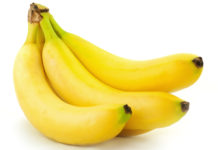For a low-maintenance crop, try growing onions. They are raised from seed or from sets, which are specially produced mini-bulbs. Aside from fertile soil and routine care, onions just need plenty of time to mature. If you want large bulbs, be prepared to wait. There are various onion cultivars available—most have brown or golden-yellow skins, but red-skinned onions are also popular and have a milder flavor.
SOWING – Onions require an open, well-drained site and non-acid soil. Dig in compost before sowing. To grow large onions, sow seed in midwinter in a heated greenhouse at 50–60ºF (10–16ºC) and harden off the seedlings in spring for planting out. For smaller bulbs, show later in the winter or in early spring, undercover but without heat. When the weather warms up, you can sow seed directly into the soil, at about .75 in (2 cm) depth, in rows 12 in (30 cm) apart.
PLANTING – For a late summer or fall harvest, plant sets in spring. Push them into the soil, 2–4 in (5–10 cm) apart, depending on size, and cover, leaving the tips showing.
CROP CARE – When planted-out seedlings are well established; thin them out according to the size of onion you want—closely planted onions are more likely to be smaller on the harvest. Water both seedlings and sets moderately since overwatering can delay swelling of the bulbs, and may make them more susceptible to disease. Weed the onion bed regularly.
HARVESTING – Onions are ready to harvest when their leaves die down and topple over. Carefully ease them out of the ground with a fork. If the weather is clear, leave them to dry on the ground. In wet weather, lifted onions rot quickly, so bring them indoors to dry off thoroughly on a rack or tray.
STORING – Once the skins have turned papery, store onions in a light, well-ventilated area. Braid the leaves into a rope and hang the onions up, or place them in single layers in slatted trays, or in a net.
PESTS AND DISEASES – Onions are susceptible to downy mildew in wet conditions. Other diseases include onion white rot, which affects the base, and onion neck rot, common in stored bulbs. Onion fly is a serious pest but less likely to impact onions grown from sets. Birds may target sets.
Onion Verities
‘Ailsa Craig’ – This variety, named after a Scottish island, is over 100 years old but is still popular, especially for showing at exhibitions. It is also known as ‘Ailsa Craig Exhibition’. The bulbs are large and globe-shaped with golden skin. They have a mild flavor and keep well in storage.
‘Copra’ – Market gardeners in the north swear that ‘Copra’ is the best hard storage onion. In the long days of summer, this hybrid produces firm, medium-sized bulbs, characterized by thin necks and yellow skins. The strong-flavored creamy flesh is best when cooked.
‘Red Wing’ – This variety is a “long-day” producer of large, very firm 3–4-in (7.5–10-cm) purple-red bulbs with thick interior rings that become more colorful with storage. In latitudes above 43°, this reliable hybrid is considered the best red storage onion.
‘Golden Bear’ – This F1 hybrid variety produces high-shouldered bulbs with thin, golden-brown skin. It is a vigorous grower, resistant to downy mildew, gray mold, and white rot, and has the advantage of cropping early, although it is not a good keeper.
‘Cortland’ – Bred for resistance to pink root and fusarium, this storage variety produces a uniform crop of 3–4-in (7.5–10 cm) firm bulbs with thick copper skins. Although it grows best in the long days of northern regions, ‘Cortland’ can also be grown in the South, too.
‘Red Candy Apple’ – Sweet, beautiful ‘Red Candy Apple’ hybrid is a popular salad and sandwich onion. It is adaptable, developing bulbs in the short-day conditions of the South, and the long-day northern summers. The mild-flavored, red-ringed onions grow larger in lower latitudes.
‘Purplette’ – This unusual variety produces mini bulbs that can be harvested early for use in salads, or left until golf-ball-sized, at which time they are ideal for pickling or for cooking whole. The skin is a burgundy red, and the bulbs turn a pale-pink color when pickled or cooked.
‘Red Wethersfield’ – This celebrated heirloom was named for the town of Wethersfield, Connecticut, where it was a valued crop in the 18th and 19th centuries. With its dark skin, pink-tinged flesh, and crisp, mild flavor, it is an attractive and flavorful slicer and a good keeper.
‘Yellow Granex’ – This is often sold as “Vidalia” onions (for Vidalia, Georgia), this hybrid variety develops super-sweet bulbs when day lengths are 10 to 12 hours, and cannot be grown in latitudes above 35°. The 3–4-in (7.5–10-cm) flattened globes store better than most sweet onions.
‘Sturon’ – This older variety is reliable and high yielding, and has a good flavor. The bulbs are medium and globe-shaped, with slightly high shoulders and good, even-toned, yellow-brown skins. It is slow to bolt in the ground and also keeps very well when in storage.
‘Stuttgarter’ – This strong-flavored and long-day onion forms large, yellow-skinned bulbs that are excellent for cooking and storing very well. This variety is commonly sold assets, which should be planted as soon as the ground can be worked.
‘Borettana’ – This Italian heirloom variety is traditionally planted at close spacing to produce small bulbs for pickling or cooking whole. It has pale, yellow-brown skin and crisp, white, sweet flesh. Grown at normal spacing, it produces medium-sized, flattened bulbs.
‘Red Brunswick’ – This variety produces bulbs of medium to large size that have maroon-red skin and white flesh tinged with purple rings. ‘Red Brunswick’ is a reliable cropper, although with little resistance to disease, but it does store well, so is available through winter and into the spring.
‘Red Baron’ – This eye-catching variety has shiny, dark-red skin and pale purple-tinged flesh with purple rings. They have a strong flavor and are good for cooking or for eating raw. The bulbs are globe-shaped, of medium size, and store well.
‘Long Red Florence’ – This Italian heirloom variety is also known as ‘Rossa Lunga di Firenze’, and produces elongated, torpedo-shaped bulbs with red skin and a mild, sweet flavor. They can be pulled young as scallions, or left to mature and become larger.
‘Centurion’ – This ‘F1’ hybrid variety has been developed from the popular ‘Sturon’. ‘Centurion’ produces flattened, globe-shaped bulbs that have straw-colored skins of good thickness. It is a heavy cropper and produces crisp flesh. This variety is known to store well.
‘Tropea Rossa Lunga’ – This is also called ‘Tropeana Lunga’, this variety from southern Italy produces long, torpedo-shaped bulbs with light, reddish-purple skin and pale-pink flesh. They have a mild flavor and high sugar content, so are ideal for eating raw and are good roasted whole.
‘Texas Super sweet’ – This sweet, mild onion was developed from the ‘Grano’ onion from Spain. In southern latitudes, ‘Texas Super sweet’ develops huge, 1-lb (450-g) bulbs when spring days are 10 to 12 hours long. When spring-planted in the north, it is not as large or as sweet.
‘Setton’ – An F1 hybrid variety that was developed as an improvement to ‘Sturon’, ‘Setton’ produces attractive-looking bulbs of uniform shape, with smooth, russet-brown skin. It is a high-yielding variety that can be used fresh or stored through into spring.
‘Walla Walla Sweet’ – Famous for its size and sweetness, this onion was originally introduced to Washington from the Mediterranean island of Corsica. The 4-in (10-cm), golden-skinned bulbs are best eaten raw and do not store well.
‘Red Marble’ – This small, flat, cipollini-type onion requires long summer days in the northern latitudes to develop. The dark-red bulbs grow to only 2 in (5 cm) wide, and with closer spacing can be harvested as smaller pearl onions. ‘Red Marble ‘Senshyu Semi-Globe Yellow’ An overwintering variety, this popular Japanese onion reliably produces heavy crops of round, straw-colored bulbs. It makes a good choice for sowing at a close spacing in order to produce a crop of baby onions in early summer.
‘White Ebenezer’ – This popular variety is commonly sold as easy-to-grow sets and is used as a green onion, a salad onion, and a storage onion. The flattened globes mature to 2.5–3 in (6–7.5 cm) and have papery wraps and crisp white flesh, with a medium-pungent taste.
‘Candy’ – This adaptable day-neutral sweet onion will develop large bulbs in both northern and southern latitudes. Started indoors and set out in early spring, ‘Candy’ produces mild, white-fleshed bulbs up to 6 in (15 cm) in diameter that store fairly well.







